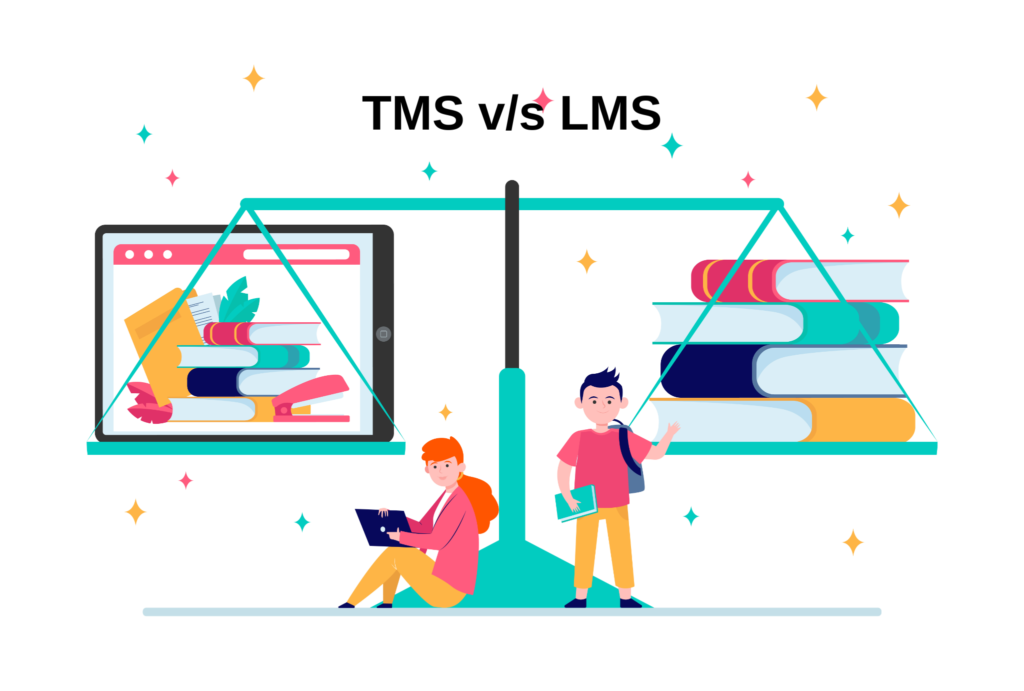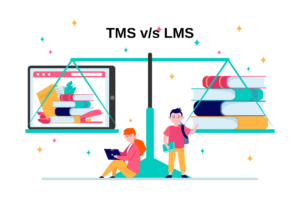In the realm of education and capacity-building services, the acronyms “LMS” and “TMS” frequently make their rounds. LMS and TMS are valuable tools for organizations and NGOs offering training and capacity-building. They play a pivotal role in boosting enrolment, streamlining operations, and enhancing the competitive edge of such organizations. However, to harness their potential effectively, it’s crucial to understand what these systems entail and whether both are necessary. In this blog, we’ll explore the functions, strengths, and when to use each system.
The Most Important Difference Between TMS and LMS You Should Know Before
In the world of training and education management, it’s imperative to grasp the central difference between a Training Management System (TMS) and a Learning Management System (LMS). At the core of this distinction lies the primary purpose of each system. A TMS excels in overseeing the intricate operations of both instructor-led and virtual instructor-led training, and it’s meticulously designed to cater to the logistics of the training back-office. On the other hand, an LMS takes the reins in the realm of eLearning, with its primary focus dedicated to enriching the learner’s experience. What’s noteworthy is that these two systems aren’t adversaries; they’re allies that, when combined, unlock a world of potential in training and education management.
A training management system (TMS) is what, exactly?
A Training Management System (TMS) streamlines and optimizes both in-person and virtual instructor-led training (ILT and vILT) programs for organizations. Essentially, TMS software serves as the backbone for the efficient management, tracking, and selling of training & capacity building services. Let’s break down the core elements of a TMS:
- Back-Office Efficiency: TMS systems are tailor-made for the intricacies of managing training operations behind the scenes. They streamline tasks related to scheduling, resource allocation, and participant registration.
- Streamlined Training Procedures: TMS software enhances the overall efficiency of training firms by providing a more effective way to manage the entire training process. This includes everything from planning , compliance and certification, evaluation, feedback collection, and coordination to tracking and reporting.
- Seamless Integration: A well-implemented TMS ensures that your training programs, whether in-person or virtual, run smoothly and can be monitored comprehensively. This integration extends to budgeting and cost management, finance and compliance aspects as well, ensuring a holistic approach to training management.
Essentially, a Training Management System (TMS) is your key ally for organizing and optimizing training programs, whether in a classroom or online.
A learning management system (LMS) is what, exactly?
Learning Management Systems, commonly referred to as LMS, serve as the cornerstone of educational and training programs. LMS platforms are designed to facilitate the delivery, management, and monitoring of learning content. They play a pivotal role in e-learning and offer a comprehensive array of features. Let’s break down the core elements of a LMS:
- Course Creation and Content Management :LMS platforms provide tools to create, organize, and manage course content. This includes uploading various types of learning materials such as text, videos, quizzes, and assignments. Content creation in an LMS is user-friendly, allowing instructors to structure and design courses according to the specific learning objectives.
- User Registration And Enrollment Tracking : LMS systems facilitate user registration, allowing learners to sign up for courses and modules. Enrollment tracking lets admins and instructors monitor course registrations, offering insights into class sizes and participant information.
- Progress Monitoring And Assessment : LMS platforms offer features to track learners’ progress throughout the course. This includes monitoring completion of lessons, quizzes, and assignments. LMS conducts assessments and quizzes with auto-grading for easier participant performance evaluation.
- Communication And Collaboration Tools : Many LMS systems provide communication and collaboration tools such as discussion forums, chat functionality, and messaging system. These tools foster interaction among learners, instructors, and peers, enhancing the learning experience and facilitating discussions.
- Reports And Analytics : LMS platforms generate detailed reports and analytics that offer insights into the performance of learners and the effectiveness of courses. Administrators and instructors can access data on completion rates, assessment scores, and engagement metrics, helping them make data-driven decisions for course improvement.
In essence, Learning Management Systems (LMS) are tailored to create a rich and interactive learning environment. They prioritize the learner’s journey, providing tools to improve education, whether in a classroom or online. It’s the go-to system for educators looking to design and deploy online courses or training modules.
The Synergy of LMS and TMS
The choice between LMS and TMS largely depends on the specific needs and goals of your organization. In some cases, having both systems can offer a complete solution for all your training and capacity-building needs.
Consider the following scenarios:
If your primary focus is delivering online courses or e-learning programs, an LMS is your best bet. It provides a robust framework for creating, delivering, and evaluating the educational content.
If you’re involved in organizing a multitude of training events, workshops, or seminars, a TMS can streamline the logistical complexities. It simplifies participant management, resource allocation, and compliance tracking.
For organizations offering a wide range of training, using both LMS and TMS can create a comprehensive synergy for all your training needs. This ensures a seamless learning experience for participants while maintaining efficiency in program management.
Conclusion:
In summary, Learning Management Systems (LMS) and Training Management Systems (TMS) are essential tools and software for training and capacity building for NGOs and training-focused organizations. Understanding the strengths and applications of each system is crucial in making an informed choice for your specific needs. Regardless of your choice—LMS, TMS, or a mix of both—these systems improve the quality and reach of your training programs.






